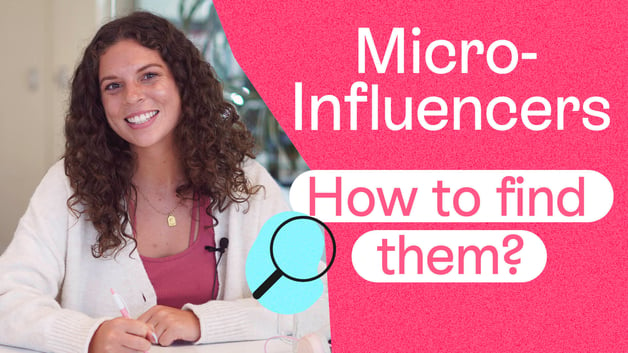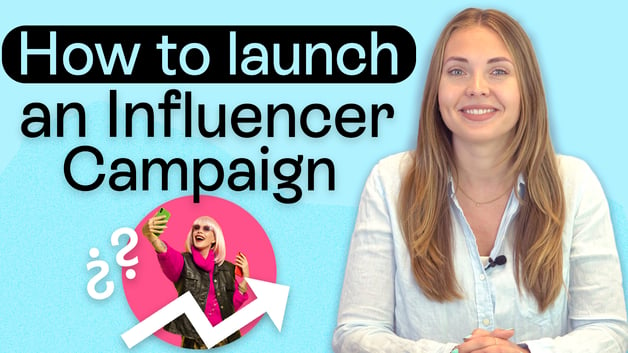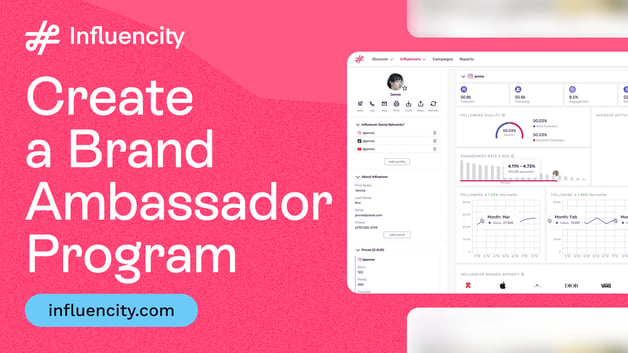Centennials: A guide on marketing for the upcoming generation
Brands all over the world are waking up to centennials. Still unfamiliar with the term “centennial”? It’s time you learnt what it meant. Afterall, centennials are about to become the largest demographic in the world in a matter of years.
Centennials: The next generation
Who are centennials? “Centennials” is the newest identifier for the generation superseding the millennial generation.These are youngsters who are currently underage or in their young adulthood. Born after 1995, centennials differ a great deal from their predecessors. They grew up with technology ever-present to convenience their everyday living, and social media to document their every living breathing moment.
Centennials are often referred to as “digital natives” as they grew up with easy access to portable digital technology and are found to be almost always preoccupied with their technological devices. “Zoomers” are the first generation to have come up after the popularization of the Internet. So is it any surprise that brands find it difficult to successfully market themselves to them? Generation Z have always had information about the latest trends on their fingertips and are no stranger to the industry trends forecast for the future.

What makes centennials different?
You probably want to know how centennials are any different from millennials now. Given millennials and centennials only have a handful of years separating their birth. You wouldn’t believe it, but when studied, it has been deduced that Zoomers are a new breed altogether.
Zoomer behavioral characteristics differ largely from that of their previous generations. For eg: Zoomers or Centennials are significantly better at delayed gratification than the Baby Boomers I.e. the generation born in the 1960s. They might struggle with short attention spans due to the hyperconnected lives they have led from birth, but this does not translate to a fondness for fast living.
Centennials also report to be more academically focused and tend to be motivated towards nurturing a career for themselves from a very early age.
When compared to millennials, centennials are even more inclusive, having grown up amid demographic diversity. Youngsters of this generation are also incredibly tuned into topics of mental health and socio-economic disparities. Being able to exercise their choice is incredibly important for them. Zoomers largely identify as gender-diverse and are fearless in their expression of gender and sexuality.

Zoomers and Social Media
Centennials or people currently aged between 15-24 make up 20% of the global population and 15% of them are found to be participating in the labor force. Even until a couple years ago, most brands were making the mistake of clubbing millennials and centennials together to focus their marketing pursuits. Lately, they are realizing how this might actually prove counter-productive.
Gen Z or Centennials have never lived a life where social-networking did not exist. They do not know of such an existence. We discuss some of the major differences in the spending habits of millennials and centennials below.
- Millennials like to spend their money on experiences. They value the riches of experiences more than owning things. Centennials like to spend their money on products that they can own. Materials are important to them.
- Centennials make most of their purchases on their smartphones. Millennials might still be using their laptop or desktop, but not Gen Z.
- It is rare for any member of Gen Z to visit a physical store to make a purchase unless they have interacted with the brand on social media first. While millennials may still window-shop offline, Gen Z is rarely the type to do so.

When it comes to social media, Gen Z likes social media platforms that their family or relatives do not frequent. Think Snapchat and Instagram. They prefer to have the content they share online available for limited time periods. Social media outlets such as Instagram and Snapchat enable this facility for them.
It has also been found that Zoomers have better decision making ability than their forefathers. Since Zoomers have grown up with sensory overload, they can pick and process information almost instantaneously.
They are averse to traditional advertising and 95% of them prefer to check customer reviews for any products before making a purchase. In fact, if they find that a product of their liking does not have an adequate number of customer reviews, they may rethink their purchase decision altogether.
If brands want to market to centennials profitably, they need only to study their behavior online. It will give them a keen insight on how to use marketing and advertising campaigns to lure them into their sales funnel.
45% of the centennial population uses Snapchat and 36% use Instagram. Both these social media networks rely on an intuitive visual interface. They enable users to send customized audiovisual messages to each other. Gone are the days when “copy” alone could convert an ad’s audience into customers for the brand. It’s all about the visual aesthetics today. If it doesn’t look right, it doesn’t feel right. If it fails to make an impression and win over its audience, the ad campaign is well and truly unsuccessful.
Another social media platform that Gen Z frequents is TikTok. The video-sharing platform counts more than 60% of its user base to be individuals born in the mid-late 90s I.e. the centennial generation. TikTok lets its users share fun and entertaining 15-second videos which may contain lip-syncs, skits, dance performances and such. Gen Z’s propensity for self-expression draws them by droves to TikTok.
How brands can position themselves to vye for centennial attention
In this section, we share a few useful tips and tricks on how brands can hook the elusive centennial’s attention:
- Focus on mobile advertising. As already discussed, centennials make most of their purchases from their hand-held multimedia devices and smartphones. They interact with the brand’s social networks before selecting any product for purchase.
- In the same vein, mobile optimization should be prioritized. It won’t help any brand to simply have a website up and running to market to centennials gainfully. The website and/or blog must be optimized for mobile viewing. It ought to not register unattractive loading lags or design incompatibility when accessed via a mobile device.
- Brands should allow influencer marketing to take center stage of their centennial marketing exercises. Centennials look up to influencers who share their interests and background to influence their purchase decisions. Targeted influencer marketing could really benefit a brand’s centennial marketing exercise.
- They should abandon their marketing efforts over traditional media when it comes to catching a centennial’s attention. Unless the traditional marketing highlights the presence of a popular centennial influencer, all traditional marketing efforts directed to win over a centennial’s fancy would fall flat. Gen Z can sniff out insincerity from a mile away and do not like being “marketed” to. They look for relatability when picking a brand to associate with. An influencer post in your brand’s favor would fail to rake in any profit from a Gen Z’s wallet if it looked even a tiny bit sponsored.

Gen Z and Influencer Marketing
Gen Z is the most racially and ethnically diverse population demographic to have existed in the US. Besides their diversity, they are also a generation that care about social issues. Gen Z likes to think and is interested in the human condition.
How to sell to them? Tell them an audiovisual human interest story that evokes strong emotions in them. Harness the power of video-sharing platforms like TikTok and YouTube to float your ads. Influencer marketing is a great way to incorporate all of this together.
Research has found that 44% of Gen Z consumers have been swayed at one time or another to make purchase decisions following recommendations from a social influencer. When compared to 26% of the regular population, this number reveals just how successful innovative out-of-the-box marketing tactics such as influencer marketing appeals to this set of youngsters.
However, even this influencer marketing effort has to be sincere. You must be able to form a genuine relation with an influencer who takes interest in your market offerings to promote them, to convince a Gen Z member to buy your product.
Gen Z prefers nano influencers. Nano influencers are niche influencers who do not have the audience reach of thousands of followers and yet, have managed to establish themselves as a known face in their local community. They have successfully fashioned themselves into a subject-matter expert in their domain with a loyal follower base vouching for their credibility.

Collaborations on TikTok are very popular among centennials, as they allow nano influencers to share their content in a fresh, innovative, convenient way and in turn market it with an authenticity that content on another social network may not achieve.
The centennial’s affinity towards individual expression reflects in the kind of content they choose to consume, marketing or otherwise. When surveyed, it was discovered that almost 87% of Zoomers reportedly follow at least one influencer who belongs to a separate ethnicity or race than their own.
Gen Z are a most unique bunch
The thing about Gen Z’s is, they are hard to club together. Individuality is a prominent characteristic among the Gen Z population. They have varied interests, come from diverse backgrounds and like/dislike different things. As such, no marketing endeavor focused towards them can club them together under the same umbrella. Marketers and ad industry creatives need to realize this uniqueness of the centennial and manipulate their marketing efforts accordingly.
Gen Z is used to information overload. Brands today find themselves struggling to pin down a centennial’s attention for long enough to market their product to them. However, the fault is their own. All they need to do is figure out how to speak their own language to them. All else will fall into place once they have successfully figured out how they can meet the Gen Z halfway.
Authentic curated experiences and genuine influencer partnerships are projected to be key for Gen Z marketing. How well will they perform? Only time will tell. What we do know is, the regular ad jingle is unlikely to convert a Zoomer into a buyer.
Tags:




















%20and%20How%20Can%20They%20Benefit%20Your%20Brand%20article.jpg?length=628&name=What%20Are%20Key%20Opinion%20Leaders%20(KOL)%20and%20How%20Can%20They%20Benefit%20Your%20Brand%20article.jpg)








